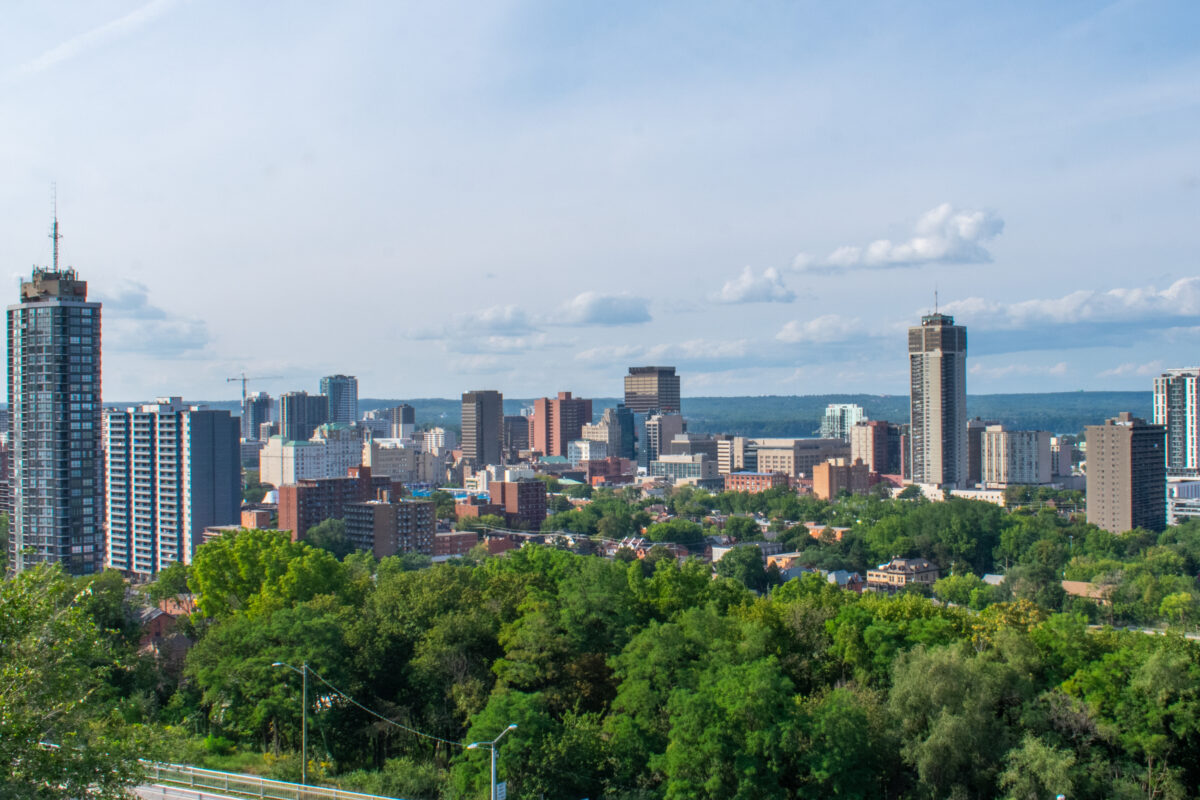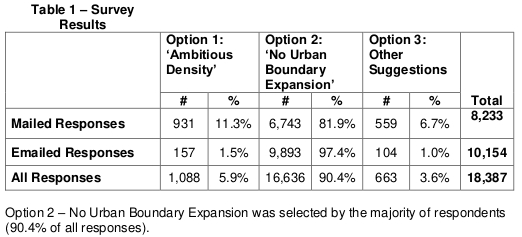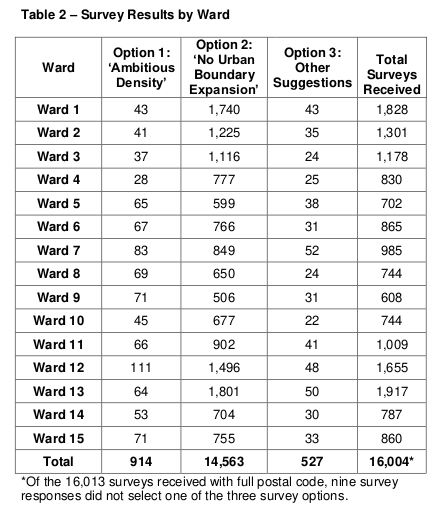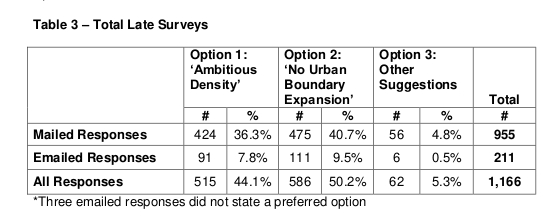Hamiltonians who responded to the City’s urban boundary survey overwhelmingly oppose expanding the boundary.
82 percent of mail survey responses oppose urban boundary expansion, 97 percent of email survey responses oppose urban boundary expansion.
In March, Ward 9 councillor Brad Clark moved a successful motion directing city staff to engage in a public survey of Hamiltonians, asking them to choose between the staff recommended urban boundary expansion of 3,300 acres or no urban boundary expansion.
The City of Hamilton mailed 215,822 surveys to households across Hamilton. 8,233 of the postage-paid surveys were filled out and mailed back to City Hall.
Of the mail responses, 11.3% supported the ‘Ambitious Density’ staff recommended urban boundary expansion, 81.9% opposed boundary expansion, and 6.7% selected “Option 3: Other Suggestions”.
The City offered a complimentary email survey that anyone could fill out. There were 10,154 online responses.
The vast majority of online responses were generated from the Stop Sprawl HamOnt (SSHO) website. Staff state these automated emails represent 81.7% (8,299) of all email responses.
Only 1.5% of the online responses favoured urban boundary expansion, 97.4% opposed expansion, and 1.0% offered other suggestions.
Combined, 90.4% of respondents choose no boundary expansion.
City staff state respondents in favour of boundary expansions shared common themes regarding housing options, supply, affordability, and farmland values, among many. They cited demand for ground-oriented housing over apartments, increased housing costs related to supply, that land is more valuable within the urban boundary, and farmers should be able to sell their land in the proposed expansion areas.
Those opposing expansion cited themes regarding underutilization of land within the existing urban area, climate change, infrastructure costs and deficits, and farmland protection for food security.
Those selecting Option 3 provided other suggestions, including a “desire for a growth option that has higher intensification rates than the Ambitious Density scenario and therefore results in a lesser amount of land required for expansion”, development of vacant lands and buildings within the existing urban area, and the addition of secondary units.
Approximately 16,000 respondents provided their postal code information with their submissions. Survey engagement per capita was highest in Ward 13 (Dundas and rural Flamborough), Ward 1 (West Hamilton), and Ward 11 (Binbrook/Glanbrook).
Late Responses
City staff say there were 1,166 responses received after the July 23 deadline to return surveys. These were 44.1% in favour of urban boundary expansion, with 5.3% selecting other suggestions.
Hamilton’s development industry launched a campaign late in the summer to promote urban boundary expansion. The campaign is mobilizing people to submit comments and plan to delegate in favour of boundary expansion.
In 2020, the Ontario Progressive Conservative government passed regulations regarding municipalities to play for urban boundary expansion up to 2051 and to include new ground-oriented housing in their official plans.
Municipalities have until July 2022 to expand their urban boundaries or face the risk of the Ontario government imposing an expansion upon them.
Hamilton is expected to need 110,320 new housing units by 2051 to meet population growth.
Hamilton City Council can vote to keep a boundary freeze and leave it to the Progressive Conservatives to decide if they wish to impose an expansion themselves.
The cost of the survey was approximately $60,000 for printing, distribution, and return postage.
Council will debate urban boundary expansion during a special meeting on October 25, beginning at 9:30 am.
The full staff report on the survey is available on the City of Hamilton website.
UPDATE: On Saturday, September 18, the development industry issued a statement responding to the survey. The statement notes this is not a scientific survey and cited concerns with the methodology. The development industry states they continue to support the City’s professional planning staff recommendation to expand the urban boundary.





Comments are closed.